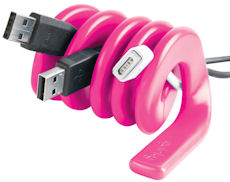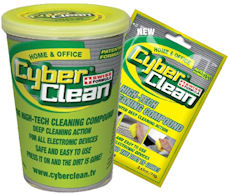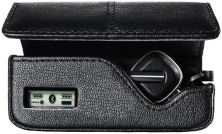 The difference is clear with the new Verizon Wireless Droid X from Motorola -- it's got a big, big display. For some, this is a great blessing, to view your apps and websites and messages more clearly, and to better enjoy and share photos and videos. But for others, the result is a handheld device that can stretch the limits of what fits comfortably in your pocket or purse.
The difference is clear with the new Verizon Wireless Droid X from Motorola -- it's got a big, big display. For some, this is a great blessing, to view your apps and websites and messages more clearly, and to better enjoy and share photos and videos. But for others, the result is a handheld device that can stretch the limits of what fits comfortably in your pocket or purse.
The Droid X display is significantly bigger at 4.3 inches, compared to the Droid Incredible at 3.7 inches (see earlier post). The resolution also steps up, to 854 x 480 pixels from 800 x 400. (In comparison, the Apple iPhone 4 display is 3.5 inches, but with very fine detail at 960 x 640 (see earlier post), up from the iPhone 3G at 480 x 320.)
The larger display not only means bigger icons and text, but also more information on the screen. The size also helps when you play widescreen video, especially if other people are trying to watch at the same time.
 Not surprisingly, the bigger screen on the Droid X results in a bulked-up case -- 5 x 2.6 x 0.4 inches, compared to 4.6 x 2.3 x 0.47 for the Droid Incredible. (Yes, the Droid X actually is thinner, with a slimmer profile that swells out at the top for the camera. The Droid X also is almost an ounce heavier at 5.5 vs. 4.6 ounces.
Not surprisingly, the bigger screen on the Droid X results in a bulked-up case -- 5 x 2.6 x 0.4 inches, compared to 4.6 x 2.3 x 0.47 for the Droid Incredible. (Yes, the Droid X actually is thinner, with a slimmer profile that swells out at the top for the camera. The Droid X also is almost an ounce heavier at 5.5 vs. 4.6 ounces.
The result pushes the bounds of today's understanding of "handheld." If you lay the Incredible on top of the Droid X, both the bottom buttons and side frame are still visible.
But this is the whole point of the Google Android platform. While Apple designs the iPhone in only one current model, for which it selects the features that you may have, the Android platform is open for different manufacturers and wireless carriers to sell different configurations, so you can find the model that best fits your needs.
Just from Verizon Wireless, your Android options are the original Motorola Droid with slide-out keyboard (see earlier post and article), the HTC Incredible with a faster processor, higher-res 8 MP camera, and optical joystick (see earlier post and article), and now the Droid X with the bigger display. Plus, the various Droid models offer features including FM radio, expansion memory (up to 32 GB with micro SD cards), and wireless mobile hotspot (to share the 3G cellular connection as a Wi-Fi hotspot).
As a multimedia device, the Droid X steps up to 720p HD video capture with the 8 MP camera, and offers HD playback on your HDTV display with the built-in micro HDMI connector. It also supports wireless sharing of music, photos, and videos to devices on your home network with DLNA technology.
 However, the flip side of the open Android approach, versus a strictly controlled platform, is the potential for anarchy in different versions of different software on different devices with different features. Yes, the smartphone has reached a crucial mass of capability and corresponding complexity, so the open PC vs. more closed Mac platform debate will play out again in handheld devices. We've seen these issues before.
However, the flip side of the open Android approach, versus a strictly controlled platform, is the potential for anarchy in different versions of different software on different devices with different features. Yes, the smartphone has reached a crucial mass of capability and corresponding complexity, so the open PC vs. more closed Mac platform debate will play out again in handheld devices. We've seen these issues before.
Another issue, though, is the desire of manufacturers like Motorola and HTC to differentiate their Android products by enhancing and improving the Google software with customized interfaces and changes to various applications.
For example, the Droid X home screen has permanent soft keys for Phone and Contacts and Apps, plus a pop-up strip to help you navigate the seven home screen panels that you can customize with shortcuts and widgets. The panels come preloaded with scads of widgets, some taking up a quarter or half the screen, for news and tips and photos and contacts and app launcher and music playback and weather and email and airplane modes and calendar and social networking. Whew! That's too much even for a computer screen, so it really seems out of place on a smartphone.
The bottom line, however, is that you have options. The Android platform is evolving rapidly, with the latest Google Android 2.2 release (see earlier post) is due out on the Droid X later this summer, with Adobe Flash Player 10.1. You may choose the Droid X with the big display for enjoying and sharing media, or prefer the original Droid for lots of messaging on the slide-out keyboard, or select the Droid Incredible for a compact and powerful Android experience.
See my full article on the Droid Incredible - Droid Incredible from Verizon / HTC
See my earlier article on the Android interface - Verizon / Motorola Droid -- Android 2.0
See my Mobile Communications Gallery for more on smartphones
See my Smartphone Apps Gallery for more on mobile apps
 Find the
Verizon Droid X, Droid Incredible, and Droid on Amazon.com
Find the
Verizon Droid X, Droid Incredible, and Droid on Amazon.com
 Instead, try out the AcousticSheep SleepPhones -- a Polartec fleece headband with integrated speakers so you can wear them comfortably all night ("like pajamas for your ears").
Instead, try out the AcousticSheep SleepPhones -- a Polartec fleece headband with integrated speakers so you can wear them comfortably all night ("like pajamas for your ears"). ![]() Find the AcousticSheep SleepPhones on Amazon.com
Find the AcousticSheep SleepPhones on Amazon.com

 The
The  Enter
Enter  The difference is clear with the new
The difference is clear with the new  Not surprisingly, the bigger screen on the Droid X results in a bulked-up case -- 5 x 2.6 x 0.4 inches, compared to 4.6 x 2.3 x 0.47 for the Droid Incredible. (Yes, the Droid X actually is thinner, with a slimmer profile that swells out at the top for the camera. The Droid X also is almost an ounce heavier at 5.5 vs. 4.6 ounces.
Not surprisingly, the bigger screen on the Droid X results in a bulked-up case -- 5 x 2.6 x 0.4 inches, compared to 4.6 x 2.3 x 0.47 for the Droid Incredible. (Yes, the Droid X actually is thinner, with a slimmer profile that swells out at the top for the camera. The Droid X also is almost an ounce heavier at 5.5 vs. 4.6 ounces. However, the flip side of the open Android approach, versus a strictly controlled platform, is the potential for anarchy in different versions of different software on different devices with different features. Yes, the smartphone has reached a crucial mass of capability and corresponding complexity, so the open PC vs. more closed Mac platform debate will play out again in handheld devices. We've seen these issues before.
However, the flip side of the open Android approach, versus a strictly controlled platform, is the potential for anarchy in different versions of different software on different devices with different features. Yes, the smartphone has reached a crucial mass of capability and corresponding complexity, so the open PC vs. more closed Mac platform debate will play out again in handheld devices. We've seen these issues before. For example, the
For example, the  Then the recent
Then the recent